350 vamps later: Woman overwhelmed by beaders' response, designs and stories
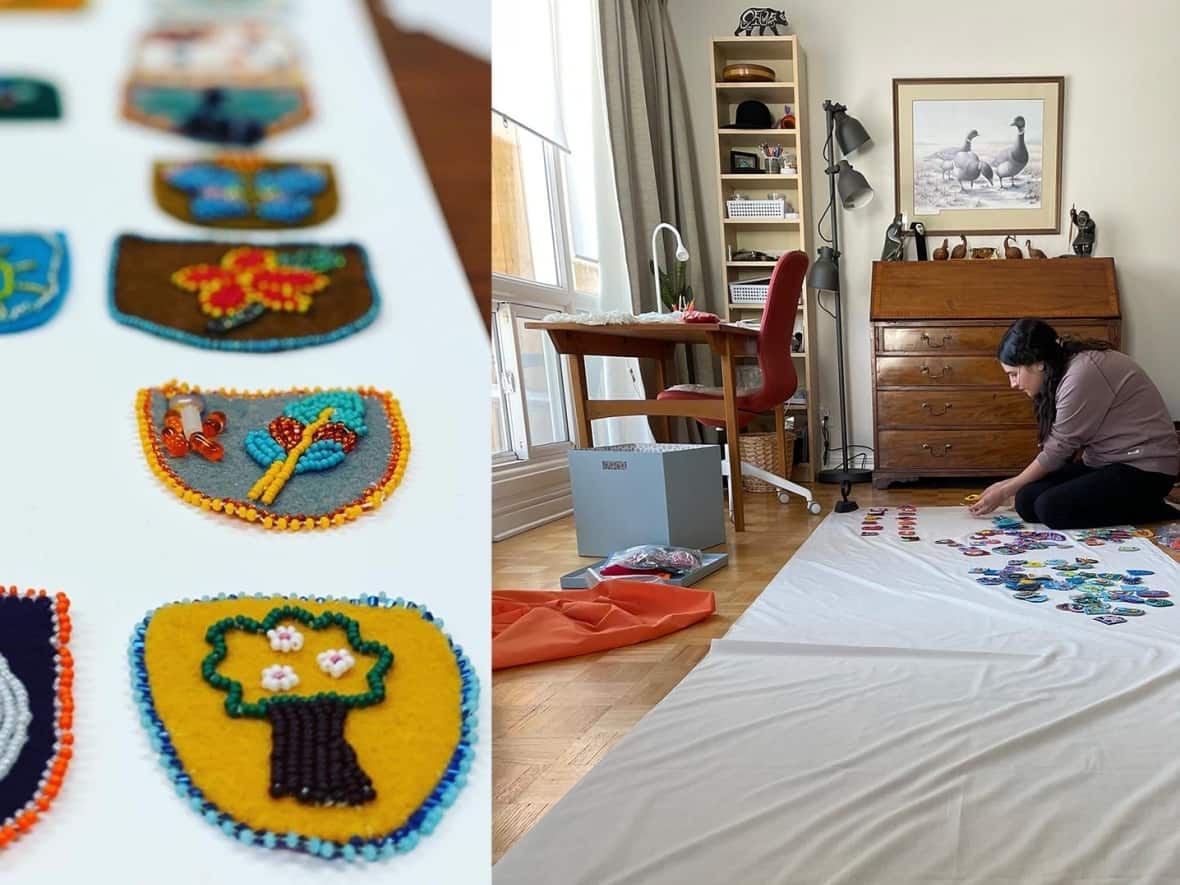
When Deborah Young put out a call in the spring of 2021, she didn't expect so many to pick up a needle and thread to answer.
Young, whose parents met at residential school, wanted to honour the children that never returned home.
In the wake of the discovery of 215 graves at the residential school in Kamloops, B.C., she asked people to bead baby vamps — which are the designs that top tiny moccasins.
Young, who is a PhD candidate in social work, was overwhelmed by the response.
"I had no idea how many vamps I was going to be getting. I didn't realize all the stories that would come with the vamps. But there you go, it just unfolded as it should," she said.
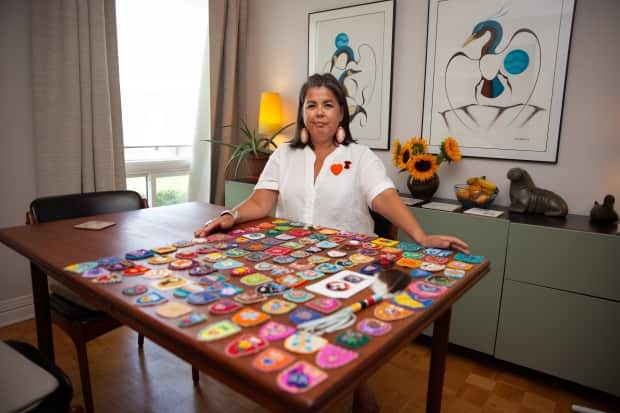
Young was inspired by a similar call put forth by a Yukon First Nation woman and decided to put out her own in the Ottawa area.
Her original goal was to collect 215 vamps to mark the Kamloops discovery, culminating last Sept. 30. But the vamps kept coming.
After more than 350 arrived in the mail, she turned her attention to how to bring them together to create a lasting memorial. For that, she teamed up with the artist daughter of a family friend.
Michelle Thompson, who is Cree and Mohawk, had already contributed her own vamps to the project, beaded alongside her mother. She says she was honoured to take on the project, recalling the powerful moment when she first saw all the vamps together.
"I definitely felt a sense of emotion, especially knowing there were little notes to go with each one," she said, including personal stories from families who had a residential school experience.
"People would mention family members that never came home. It was very emotional, but inspiring at the same time."
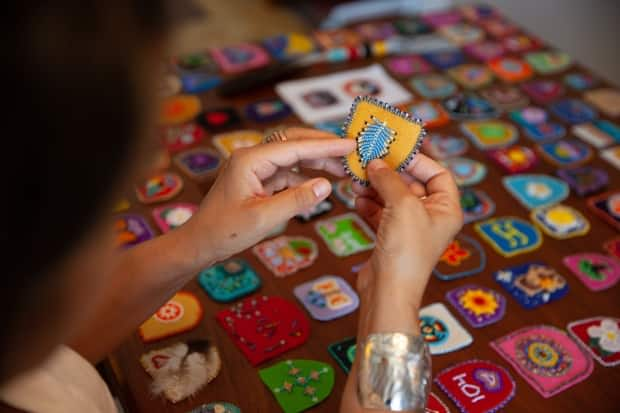
Walking with the children
Thompson and Young talked about how to tell the children's stories through these vamps, settling on a design featuring colourful pathways leading from east to west.
"They are finding their way home, basically," Thompson explained.
The 11-foot long piece will be unveiled at Carleton University on the National Day for Truth and Reconciliation Day, alongside a commemorative plaque and a keynote address from Kimberly Murray, the Independent Special Interlocutor for Missing Children and Unmarked Graves and Burial Sites.
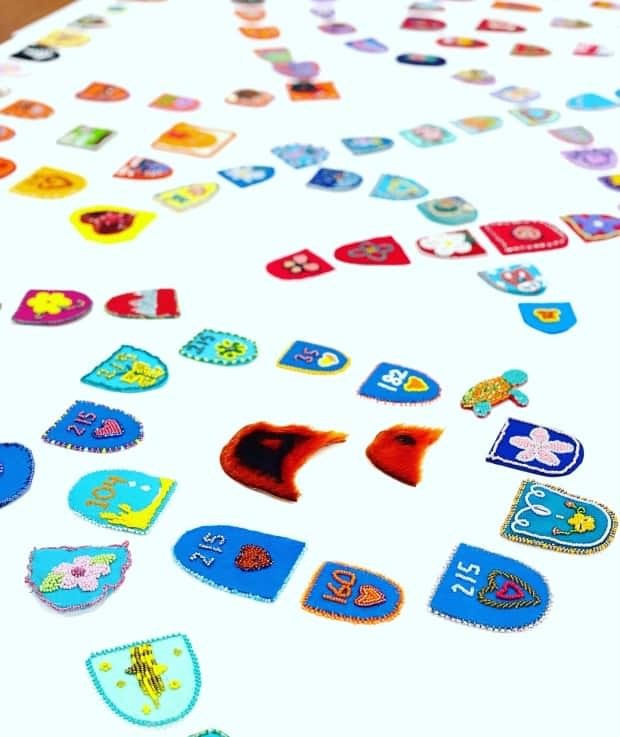
Young also plans to create something in the future to honour the powerful stories that accompanied the creations, many of which made her weep, including one in particular from a residential school survivor in the North.
"This woman sent me two sealskin vamps that she dyed orange herself. They arrived ... with a note saying that these vamps represent her two friends that never came back. There was three of them that went to residential school, and she was the only one that came back home."
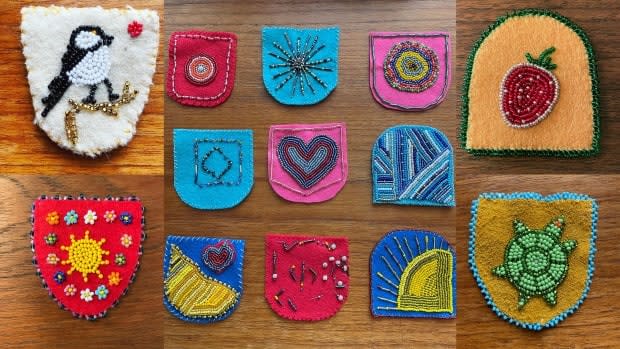
Beaded connections
Thompson resonated with the stories of beaders who were able to reconnect with their Indigenous roots.
"Once you try beading for the first time, you really feel the connection to the culture," she said, explaining her mom, who was adopted in the Sixties Scoop, reconnected with her Cree heritage and her own mother through beading, and is now passing that on to Thompson.
Thompson, who beaded her first vamp for Young's project, and went on to sew her first pair of moccasins for her one-year-old son, says that time with her mother has felt therapeutic.
"We usually do bead together. It's something that we enjoy doing. We have tea, we chat, we catch up. We copy each other ... it was really special actually."
Young also contributed a number of vamps to the project, mostly featuring numbers from the discovery of unmarked graves, including the 182 at St. Eugene's and 751 at Cowessess First Nation.
For her, it was important people understand the sheer number of children who didn't return.
"It's shocking when you think about it, right? That's whole generations gone, their stories no longer. That's a whole small city wiped out. It really brought things home for me," said Young.
The installation will be on display at the Ottawa School of Art and Carleton's library before making its way to a permanent display in Carleton's school of social work.

Custodian of the vamps
Fifteen months after Young first put out the call for vamps, she worries public attention has moved on from the conversation around residential schools. She hopes this piece will keep the focus on that legacy.
Young's father and twin aunts, all survivors, will be on hand for the unveiling of the piece that Young says has helped her connect with her own family history.
"I know what those schools have done, and the impact they had on my own family," she said.
"It was a really deeply profound journey for me, and incredibly humbling as well. Just to be the custodian of these baby vamps."
Young says she was alone with the vamps and the "heartbreaking" sight would leave her in tears.
"But, it also gave me hope," Young said, adding she's grateful to be able to make this contribution.
"You want to be able to make sure the truth is being heard and you're helping facilitate that truth-telling."



